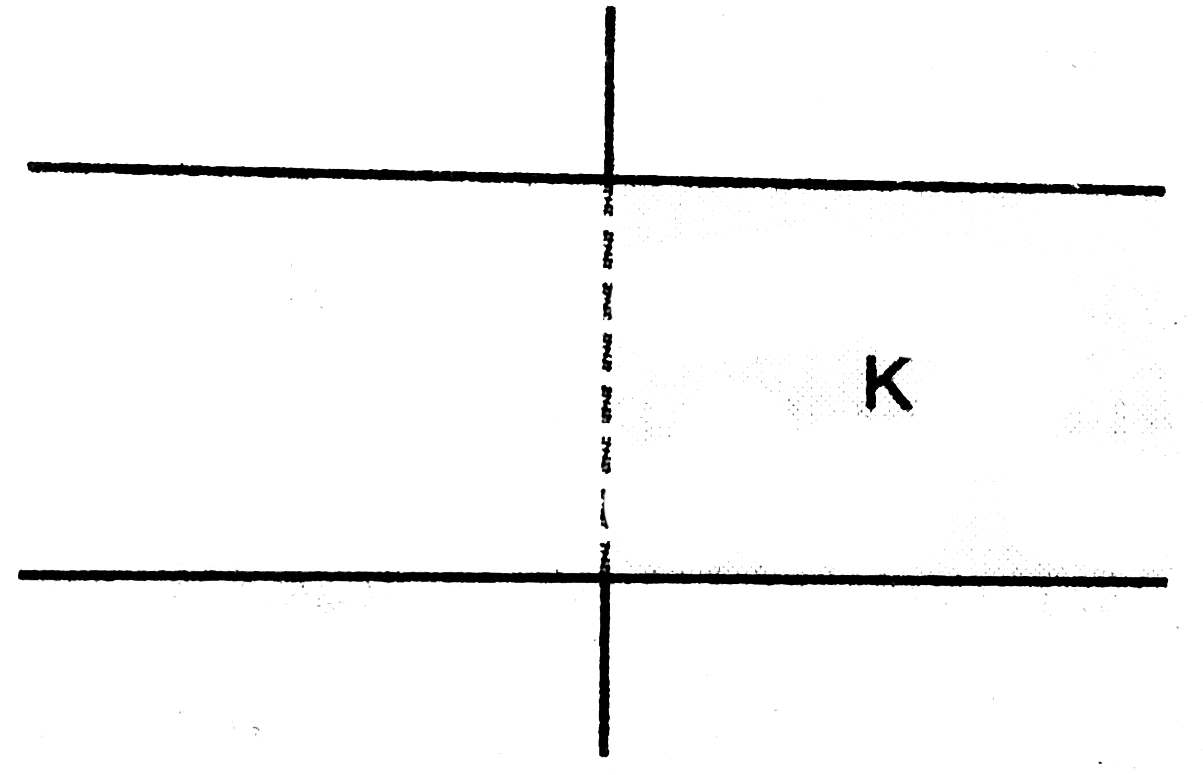For metals the value of dielectric constant (K) is
zero
infinite
1
10
The correct Answer is:B
To determine the value of the dielectric constant K for metals, we can follow these steps:
Step 1: Understand the Definition of Dielectric Constant
The dielectric constant K is defined as the ratio of the permittivity of a medium (ε) to the permittivity of free space (ε0). Mathematically, it is expressed as:
K=εε0
Step 2: Identify the Permittivity of Vacuum
The permittivity of free space (vacuum) is a constant value, denoted as ε0. For vacuum, the dielectric constant K is defined as:
Kvacuum=1
Step 3: Understand the Behavior of Metals
Metals are excellent conductors of electricity and have a high density of free charge carriers (electrons). When an external electric field is applied to a metal, these free charges move in response to the field, leading to a significant polarization effect.
Step 4: Analyze the Polarization in Metals
In metals, the free electrons can move almost freely, which means that they can completely shield the electric field within the metal. This results in a very high effective permittivity for the metal.
Step 5: Conclude the Value of Dielectric Constant for Metals
Since the permittivity of the metal (ε) becomes very large due to the complete polarization, we can conclude that:
K=εε0→∞
Thus, the dielectric constant K for metals is considered to be infinite.
Final Answer
The value of dielectric constant K for metals is infinite.
---
The dielectric constant K is defined as the ratio of the permittivity of a medium (ε) to the permittivity of free space (ε0). Mathematically, it is expressed as:
K=εε0
The permittivity of free space (vacuum) is a constant value, denoted as ε0. For vacuum, the dielectric constant K is defined as:
Kvacuum=1
Metals are excellent conductors of electricity and have a high density of free charge carriers (electrons). When an external electric field is applied to a metal, these free charges move in response to the field, leading to a significant polarization effect.
In metals, the free electrons can move almost freely, which means that they can completely shield the electric field within the metal. This results in a very high effective permittivity for the metal.
Since the permittivity of the metal (ε) becomes very large due to the complete polarization, we can conclude that:
K=εε0→∞
Thus, the dielectric constant K for metals is considered to be infinite.
The value of dielectric constant K for metals is infinite.
Topper's Solved these Questions
- BOOK - NCERT FINGERTPS ENGLISHCHAPTER - ELECTROSTATIC POTENTIAL AND CAPACITANCE EXERCISE - HOTS5videos
ELECTROSTATIC POTENTIAL AND CAPACITANCE
- BOOK - NCERT FINGERTPS ENGLISHCHAPTER - ELECTROSTATIC POTENTIAL AND CAPACITANCE EXERCISE - EXEMPLAR PROBLEMS3videos
ELECTROSTATIC POTENTIAL AND CAPACITANCE
- BOOK - NCERT FINGERTPS ENGLISHCHAPTER - ELECTROMAGNETIC WAVESEXERCISE - Assertion And Reason15videos
ELECTROMAGNETIC WAVES
- BOOK - NCERT FINGERTPS ENGLISHCHAPTER - MAGNETISM AND MATTER EXERCISE - NCERT Exemplar5videos
MAGNETISM AND MATTER
Similar Questions
An isolated parallel plate capacitor has circular plates of radius 4.0cm. If the gap is filled with a partially conducting material of dielectric constant K and conductivity 5.0×10−14Ω−1m−1. When the capacitor is charged to a surface charge density of 15μC/cm2, the initial current between the plates is 1.0μA?
a. Determine the value of dielectric constant K.
b. If the total joule heating produced is 7500J, determine the separation of the capacitor plates.View SolutionTwo point charages placed at a distance r. in the air experiene a certain force. Then the distance at which they will experience the same force in the medium of dielectric constant K is
View SolutionA parallel plate capacitor of capacitance 90 pF is connected to a battery of emf 20 V. If a dielectric material of dielectric constant K=53 is inserted between the plates, the magnitude of the induced charge will be :
View SolutionTwo point charges placed at a distance r in air experience a certain force. Then the distance at which they will experience the same force in a medium of dielectric constant K is
View SolutionAn uncharged parallel plate capacitor having a dielectric of dielectric constant K is connected to a similar air core parallel plate capacitor charged to a potential V0. The two share the charge, and the common potential becomes V. The dielectric constant K is
View SolutionThe value of Henry's constant KH…….
View SolutionAs shown in Fig, a dielectric material of dielectric constant K is insered in half portan between plates of parallel plate capacitor. If its initial capacitance is C, what is the new capacitance ?
 View Solution
View SolutionAt equilibrium, the value of equilibrium constant K is
View SolutionAir filled capacitor of capacitance 2μF is filled with three dielectric material of dielectric constant K1=4,K2=4 and K3=6 as shown in the figure . The new capacitance of the capacitor is
View SolutionA parallel plate capacitor has a dielectric (of dielectric constant k) between the plates. The plates are charged to a surface charge density σ0. What is the density of the polarized charge that appear on the surface of the dielectric.
View Solution

